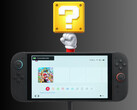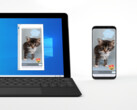With Nintendo Switch 2 specs like a larger display and faster processor, it's easy to overlook additions like GameShare. Faced with higher game prices, the new capability is a way to potentially save money. Compatible titles allow owners to start multiplayer sessions with users who don't own the same Switch 2 games. However, some recent interviews and videos suggest that GameShare is more than just screen mirroring.
One obstacle to GameShare adoption is the development time required to implement it. At least for Unity, the makers of Survival Kids, the feature was worth the effort. After debuting in 1999 for the Game Boy Color, the series will return on the June 5th Switch 2 release date. GameFile interviewed Andy Dennison of Unity, who described how GameShare works in the title.
In Survival Kids, there will be a two-player co-op mode at 60 fps and a three-player mode at 30 fps. On each console, gamers see a different camera view, as if each participant had a copy of the game. Also, sound effects will vary depending on a player's location. Dennison explained that some examples of GameShare require significantly more coding from programmers. Without improved Switch 2 specs, such as increased memory capacity, the co-op gameplay may not be possible.
The Nintendo Today! app also demonstrated how GameShare works with less resource-hungry Switch 2 games. In Clubhouse Games: 51 Worldwide Classics, players see game boards from their own perspectives. One small drawback is that, at least in this case, the screen shrinks for guest players.
GameShare can operate over a local wireless network or, for the Switch 2 only, online through GameChat. Nintendo's list of participating multiplayer games is brief and doesn't even include Survival Kids. Hopefully, players will learn more about how developers take advantage of GameShare in the weeks to come.


















































